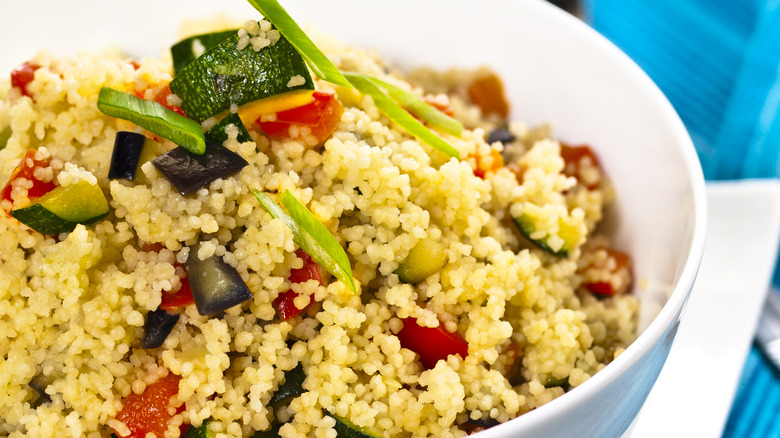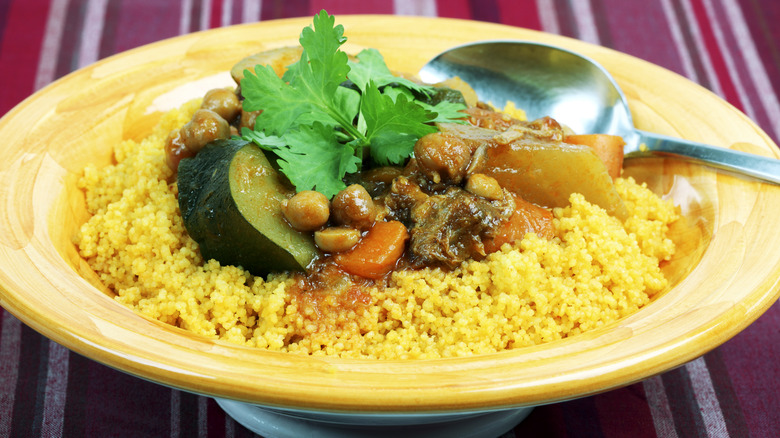The Crucial Seasoning Tip To Remember When Making Couscous
Whether you're preparing couscous as a side in something like harissa sirloin steak with carrot couscous salad, or as a main dish, as in Moroccan couscous, bland pearls are the last thing you want. But that's exactly what you'll get if you only follow the basic instructions on water-to-couscous ratios without regard for flavor. When cooking the pasta, it behooves you to get a head start on seasoning by always salting the water.
Just like rice or other pasta types, adding salt to your water ensures an even distribution throughout your couscous instead of just sprinkling it on top after cooking it. The same is true for any other flavors you wish to impart to your couscous, like butter or aromatics — add it to your water, and it will get absorbed as well.
To that end, you can give your couscous an even greater boost of flavor by cooking it in just about any flavor broth you'd like in place of water. This is another way to add complexity to your couscous dish on the front end. But before you get started, it's a good idea to understand the different varieties of couscous and their idiosyncrasies before setting out to cook some up. This will allow you to choose the best option for your intended use, pairing it with flavor profiles that will work best together.
How to make couscous
To make couscous, measure out and bring to boil the water or the broth of your choice. How much liquid depends on the specific brand/type of couscous you're using, so be sure to check your instructions. While some brands stick with a 1:1 cup ratio, others call for slightly more water at 1¼ cups of liquid to 1 cup of couscous.
Once your water is boiling (some say just a simmer), add your salt and other seasonings, herbs, and spices to taste. It's important to note that waiting until your water hits the boiling point will cause the salt to incorporate into the water more quickly, leaving no grit behind. Suzy Karadsheh, author of "The Mediterranean Dish," uses "a small drizzle of extra virgin olive oil and a pinch of kosher salt," when cooking her couscous. Once your couscous is in the pan, lid it, remove from the heat, and allow it to sit until all the liquid has been absorbed (5 to 10 minutes). Last, fluff it with a fork. Karadsheh also recommends lightly toasting the couscous with olive oil in a pan before cooking it in water. Follow these simple instructions to salt your water when cooking couscous, and not only will it be light and savory, but the results will also be well-seasoned and yummy every time you make it.

